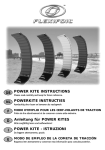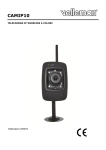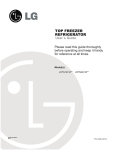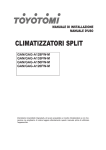Download User Manual HW80-1479
Transcript
nl
ow
D
d
de
oa
m
fro
C
1400
C
1000
C
C
500
20 C
e
.b
HW80-1479
re
or
nb
de
an
.v
w
w
w
User Manual
nl
ow
D
d
de
oa
Elements
m
fro
Please read these in
ons carefully before using this appliance. The ins
ons contain
important informa on which will help you get the best out of the appliance and ensure safe and
proper installa on, use and maintenance.
e
.b
re
or
nb
de
an
.v
w
w
w
Thanks for purchasing a Haier Product
Keep this manual in a convenient place so you can always refer to it for the safe and proper use of
the appliance.
If you sell the appliance, give it away, or leave it behind when you move house, make sure you also
pass on this manual so that the new owner can become familiar with the appliance and safety
warnings.
Accessories
Check the accessories and literature in accordance with this list:
1x User Manual
User Manual
HW80-1479
Prewash
C
1400
C
1000
C
500
1x Drain hose brocket
C
5x Blanking Plugs
1x Bo om Cover
1x Inlet hose assembly
1
nl
ow
D
d
de
oa
Index
m
fro
w
w
................................................................................................................................................. 3
or
nb
de
an
.v
w
Before Use ............................................................................................................................................... 5
ons ..................................................................................................................................................8
Maintenance ...............................
.............................................................................................................16
rvice ................................................................................. .................................................21
Legend
Yes
No
O
onal
Ca
on
n
Disposal
The presence of this symbol on the product, accessories or materials that goes with this informa
indicates that at the end of its useful life the pro duct or its electronic accessories (ex. charger,
headset, USB cable) should be dispos ed with other household waste.
To prevent possible damage to the environment or human health from
uncontrolled waste disposal, please separate these items from other types of
waste and recycle them. This will pr omote the sustainable reuse of material
resources.
Household users should co ntact either the retailer where they purchased the
product or the relevant loc
es to out how they can take this
item for environmentally safe recycling and safe.
ons of the
Business users should contact their suppli er and check the
p urchase. This p rod uct and itselectronic accessories should be mixed with
other commercial waste.
2
e
.b
g ................................................................................................................................. .19
re
Trouble-Shoo
nl
ow
D
d
de
oa
Cauons
&DXWLRQV
m
fro
Before switching the appliance on for the first me
Use a separate earthed socket for the power supply.
e
.b
Make sure that the transport bolt is removed.
Make sure that the plug is accessible.
Hold the plug and not the electric cable when unplugging the
power supply.
Make sure that the fuses in the power circuit are rated for 15A.
Keep it away from heat sources and direct sunlight to prevent plasc
and rubber components from aging.
Make sure that the power card is not caught under or in the appliance and avoid damage to
the power cable.
Check that hose joints and connecons are firm and with no water leaking. If joints are not
firm there will be leakage, turn off the water supply and refix it. Do not use the washing
machine unl the hoses are totally fixed.
Do not…
Touch or use the appliance when barefoot or with wet or damp hands or feet.
Use flammable detergent or dry cleaning agent.
Use any flammable sprays in close vicinity to the appliance.
Remove or insert the plug in presence of flammable gas.
Allow children or infirm persons to play with the appliance or packing materials.
Install the appliance outdoors in a damp place, or in an area which may be prone to water
leaks such as under or near a sink unit. In the event of a water leak allow the machine to dry
naturally.
Place the washing machine directly on a carpet, or close to a wall or furniture.
During daily use of the appliance
Do…
re
or
nb
de
an
.v
w
w
w
Do…
Pull up zips and fix loose threads to prevent the items from being entangled. If necessary, put
small items into a small bag or pillow.
Turn off the machine aer each wash program and switch it off at the mains to save
electricity, and for safety. Wipe clean the lower part of the porthole.
Keep the door slightly open when the washing machine is not in use to prevent formaon of
odors.
3
nl
ow
D
d
de
oa
fro
m
Let the power cord be replaced by the manufacturer, his service agent or other accordingly
, in case it is damaged.
w
w
Supervise children to ensure that they don’t play with the appliance.
e
.b
re
or
nb
de
an
.v
w
Ensure that the appliance is not used by peo ple with reduced physical, sensory or mental
ck of experience and knowledge with out supervision or instruon by a person
that responsible for their safety.
Do not…
Touch de washer door during the washing process, it gets hot.
Place heavy objects or sources of hea t or damp on top of the appliance.
Hot wash from rubber or sponge-like materials
Op en th e deterg en td istribution d rawer d uring th e wash cycle.
Force de washer door to open, the doored with a self-lock device and will open shor tly
he washing procedure is ended.
Open the washer door if the water level is visibly over the porthole.
Cover the washing machine with c cover so that insid e dampness cannot be kept in.
Saving Tips
Achieve the best use of energy, water, det ergent e by using the recommended
maximum load size
Do not exceed the detergent dosages indicated in the manufacturer’s instrucns.
The Eco-Ball –a special system in the outlet- will prevent detergent loss from the drum to
avoid detergent loss into de environment.
Use “Prewash” for heavily soiled laundry only. Save detergentme, water and energy
consumpby not sng “Prewash ” for slightly to normal soiled laundry.
Save enerme by selecng a high spin speed to reduce the water content in laundry
b efore using a tum b le d ryer.
Choose a proper washing temperature. Mod ern detergents can wash with very good result
already in lower temperature than 60°C. Onl y use higher temperature than 60°C for heavily
soiled laundry.
4
nl
ow
D
d
de
oa
Before Use
fro
Before Use
m
w
or
nb
de
an
.v
w
w
Descrip on
This diagram may be slightlynt from the layout of the washing machine you have just
purchased.
e
.b
re
Control panel
Drain hose
Start/Pause
Water inlet valve
Door handle
Power cord
Work top
Back cover screws
Washer door
Back cover
Filter cover
Prewash
C
1400
C
1000
C
500
2 C
T3
S4
S2
T2
T1
S3
Preparing the machine
Remove all the packing materials to prevent unsteadiness, including
the polystyrene base. Upon opening the package, water drops may bee
bag and the porthole. This is normal phenomenon
n
seen on the pla
resul ng from water tests in the factory.
5
T4
S1
nl
ow
D
fro
on
m
In
d
de
oa
Before Use
w
w
om cover
or
nb
de
an
.v
w
Adjus ng the b
e
.b
re
Before removing the transpo
on bolts, please the bo om cover to the bo om of the washing
machine. Lay down the mach!, screw he
feet and adjust the bo om cover with the four holes
corresponding to the screw holes of the feet. Then
screw the feet back on through the cover and t
thus securely to the bo om of the machine "!.
It keeps out the dampness and reduces the noise.
Dismantle the transport
on bolts
The transpo
on bolts are designed for clamping an vib on components inside of the washing machine during
the transpo
on process.
Remove the back cover.
Remove the four bolts on the rear side and take out
c stabilizers from within the machine.
the syn
Replace the back cover.
Fill the holes le by the bolts with blanking plugs.
Note:
When you replace the back cover, the convity
must face to outside, and you have to insert the
back cover from the two gaps as sho#$
Keep the transporta on bolts and synthe c
stabilizers in a safe place for later use.
5.
Adjus ng the feet
There are adjustable feet under the bo om of the washing machine. Before
use, they should be adjusted so that the machine is level. This will minimize
vibr ons and thus noise during use. It will also reduce wear and tear. We
recommend using a spirit level to level the appliance. %&'oor should be as
't as possible.
6
nl
ow
D
d
de
oa
fro
m
Inlet Hose
Apply inlet hose to a water tap with cold,
fresh water.
e
.b
re
or
nb
de
an
.v
w
Connect the nut on the inlet hose to the
connector on the water valve.
w
w
Use the hose-set supplied with the appliance.
Old hose-sets should not be reused.
Drain Hose
Use the drain hose bracket to keep the end of the
drain hose retained and prevents the ou low of
water. Don't extend the length of the drain hose; if
an extended hose is required, please consult a
serviceman.
The height of the drainage outlet must be 80-100
cm. Fix the drain hose to the clip at the back of the
washing machine to prevent it from dropping off.
The drain hose should not be submerged in water and should be securely fixed and leak-free.
If the drain hose is placed on the ground or if the pipe is at a height of less than 80cm, the
washing machine will con nuously drain while being filled (self-siphoning).
Conne ng to Power Supply
Before connec ng to the power supply, check:
The socket is adequate for the maximum power of the washing
machine (For safety, fuses in the power circuit should be rated
for no less than 15A).
The voltage should meet the requirement.
The power outlet should be capable of accep ng the washing
machine plug.
Connect the machine to an earthed socket outlet.
7
nl
ow
D
d
de
oa
ons
10 11
m
fro
9
Control Panel
1400
C
1000
C
500
or
nb
de
an
.v
w
w
w
C
2 C
e
.b
re
1
2
Oper
onal Func ons
Nº
Func on
Detergent
drawer
4 5 6 7
8
11. Delay
6.
7. Extra Rinse
8.
9. ECO
10. LED Display
1.
2.
3. Program Dial
4. Wash Temp
5. Spin Speed
1
3
Explica on
Open the drawer, three compartments can be seen:
Compartment 1: Prewash detergent
Compartment 2: Detergent for programs 1 to 9.
2
3
1
for the various washing temperatures, please refer to the
manual of detergent.
2
3
Program Dial
By turning the knob clockwise/counterclockwise, the required program can
corresponding light will go on.
4
Wash Temp
indicator. Select a temperature according to the type of laundry.Note: If there
is no indicator light displayed, it means cold wash.
5
Spin Speed
will be displayed on the indicator.Note: If there is no indicator light displayed,
it means no spinning.
Dierent water temperatures and spinning speeds can be set for
special requirement.
6
8
nl
ow
D
d
de
oa
Funcons
fro
Extra Rinse
7
m
Press this buon, the washing machine will perform addional rinses.Press
the buon once to select one addional rinse. The display will show"P-1".
Press the buon repeatedly and the screen will display "P-2''or "P-3'',
indicang two or three addional selected rinses. The "extra rinse light" is
acvated and flashes during the performance. "P-1/2/3" is displayed
alternang with the remaining me. The light turns off and the display
disappears when the extra rinse ends.
8
Start/Pause
Buon
When the washing machine is connected to the power socket and a
program is selected, lightly touch this buon to start operaon. During
a wash cycle, touch it lightly ,operaon will stop and the digits on the
screen start blinking. Touch it again to resume operaon. To cancel a wash
program during a wash cycle, touch this buon, when the digits on the
screen start blinking, press the Power switch, the program will be cancelled.
9
ECO
Before a washing program,select this program to set the washing load
(1/2Full),the washing machine will automacally adjust the water
consumpon and washing me.
10
LED Display
Informaon as remaining wash me and error messages will be shown here.
Aer a wash program is started the display will go on and the
remaining wash me decreases. As the water pressure and
temperature may differ, the remaining me may be adjusted
accordingly. When the laundry is not balanced during spinning, the
me may be automacally prolonged.
11
Delay
Touch this buon lightly, the washing machine will start operaon aer a
period of me and the corresponding indicator will go on. The range is 0.5-24
hours; each touch of this buon increases a half hour. Aer the buon is set,
press the Start/Pause buon to start countdown of the set me (the me is
displayed on the screen unl the program ends).
The delay me must be longer than the program me otherwise
the washing machine will start the wash program directly.
To cancel audible alarm
Alarm sound can be cancelled if it is required (not recommended)
Switch on the washing machine and turn the program knob to spin cycle, then press the
"Delay" and "Extra rinse" buon, hold on for 3 seconds.
The message "BEEP OFF” will be displayed on the screen, indicang that the alarm sound has
been cancelled.
To reinstate audible alarm
Switch on the washing machine and turn the program knob to spin cycle, then press the
"Delay" and "Extra rinse" buon, hold on for 3 seconds.The "BEEP ON" message will be
displayed on the screen, indicang that the alarm sound has been reinstated.
9
e
.b
Select this funcon when programe 1-9 is selected.
re
or
nb
de
an
.v
w
w
w
nl
ow
D
d
de
oa
ons
fro
m
Program Modes
w
2
2 Detergent compartment
1
e
.b
re
or
nb
de
an
.v
w
w
1 Detergent compartment for prewash mode
3
Program
Temp Max
Preset
Wool
0-40 °C
20°C
Woolen fabrics
500 rpm
0-60 °C
40°C
Chemicalfabrics
1000 rpm
Eco
0-90 °C
40°C
1000 rpm
Standard
0-90 °C
40°C
1000 rpm
Pre-wash
0-90 °C
40°C
Quick Wash
0-20 °C
20°C
Sport
0-40 °C
20°C
Mixed
0-60 °C
40°C
1000 rpm
Delicate
0-40 °C
20°C
500 rpm
Rinse
--
--
/
1400rpm
Spin/Drain
--
--
/
1400rpm
2
3
1
Fiber type
Heavy soiling
Preset spin speed
1000 rpm
1000 rpm
Sports wear
Yes
No
10
1000 rpm
nl
ow
D
d
de
oa
m
fro
Wool
Energy
Water
Wash /
/
/
/
/
/
1:00h
1:10h
1:18h
4kg
0.60kwh
36L
2:38h
/
49%
/
53%
Standard
60
4kg
0.87kwh
36L
2:58h
53%
Standard
Pre-Wash
"
# Wash
Sport Wear
$
&
60
40
20
20
40
20
8kg
8kg
4kg
4kg
8kg
4kg
0.85kwh
/
/
/
/
/
56L
/
/
/
/
/
2:58h
1:46h
0:15h
0:25h
1:18h
1:01h
53%
/
/
/
/
/
!
laundry and they are the most t program
n terms of o
nergy and water
om the deytemperature.
Choose the best Detergent
Wool
!o
Standard
x
&
L
P
O
-
'
(l
L/P
L/P
L/P
L/P
Detergent
)
*
d
Powder
No
Color
L/P
L/P
L/P
L/P
-
&
e
L
L
l
L
-
Temperture range - 60
40 - 90
-----
11
O
O
O
O
O
O
e
.b
2kg
4kg
4kg
Standard
20
40
40
40
re
or
nb
de
an
.v
w
Temp. Max.Load
w
w
Program
nl
ow
D
d
de
oa
fro
m
Washing Methods
w
w
e
.b
re
or
nb
de
an
.v
w
the machine is use for commercial purpose
the guarantee will not be valid anymore. Do not use it for purposes other than that for which
on the label of each garment and wash only
machine-washable garments.
Power Supply
Connect the washing machine to the power supply (220V to 240V~/50Hz).
Turn on the tap. The water must be clean and clear.
Before use, check for leakage in the joints between the tap and the inlet
hose by turning on the tap.
Preparing the Laundry
Sort out clothes according to fabric (c
how dirty they are.
Separate white clothes from colored ones. Wash them rst by hand to check
if they fade or run.
Empty pockets (keys, coins, etc.) and
(e.g. brooches).
which user has to pay by him and can cause damage in the machine.
washing machine).
Close zippers and hooks, make sure
place small items such as socks, belts, bras, etc. in the wash bag.
Unfold large pieces of fabric such as bed sheets, bedspreads, etc.
Turn shirts inside out.
12
nl
ow
D
d
de
oa
ons
fro
m
Loading the appliance
w
C
1400
C
1000
C
C
500
20 C
w
or
nb
de
an
.v
w
Open the washer door put in the laundry piece by piece. Close the
door ghtly.
e
.b
re
<t using the washing machine, let it run unloaded for one
program to prevent the laundry from being tainted by oil or dirty
water from the washing machine. Before washing you should run
the machine without laundry, but with detergent, with 60°C
program.
Do not overload the washing machine.
Sele ng Detergent
The wa
cy and the performance is determined by the quality of detergent used. Special
non-foaming detergent produces good washing results. Use spe
etergents for synthe and
woollen goods. Do not use dry cleaning agents such as trichloroethylene and similar products.
Do not add more detergent than needed; otherwise, it may cause the situa ons as following
g washing machine’s life.
and washing machine malfun on imp
Due to the increasing foam, the rinse me will be longer than normal;
The foam may (> from the detergent drawer because of the increasing pressure of
the foam;
It may remain foam without cleaning out er thal
spinning cycle.
Recommend
on:
Clean the detergent drawer once a week.
When using the prewashing program, please add half of the
ng dosage.
Please follow the dosage recommend
on on the powder or liquid detergent package.
Adding Detergent
Slide out the detergent drawer and put the required detergent and so ening agent into the
corresponding compartments. Push back the drawer gently. (Refer to the instruc ons on the drawer)
For prewashing program, detergent should be added to both
compartments 1 and 2.
For other programs, do not add detergent to compartment 1.
Use liquid detergent according to the instru ons on its package. Do
not use liquid detergent if the prewash mode or "Delay" is
selected.
Do not overuse so ener; otherwise, it will damage the ar l
bers.
13
2
3
1
nl
ow
D
d
de
oa
ons
fro
m
Sele ng program
1400
C
1000
500
re
or
nb
de
an
.v
w
w
To get the best washing results, an appropriate
washing program should be selected according to
the laundry type. Please turn the program knob to
select the right program.
w
C
C
C
20 C
e
.b
Sele ng fun onal
Select the required op ons. (Refer to the "Control panel" pages 8,9 and 10)
Se ng washing temperature
Press and hold down the temperature bu on un
he desired temperature is selected.
Se ng spin speed
Press and hold down the speed bu on un
e desired speed is selected. See "
onal
fun ons" on the "Control panel" pages (08 and 09) for selec ng temperature and spin speed. It is
advisable to select the recommended value.
Washing
Press the Start/Pause bu on. The washing machine will operate according to the preset programs.
on autom
ly when a washing cycle ends. The "End" sign
The washing machine will stop op
will appear on the display. Open the washer door and take out the laundry.
A er washing
Turn o the water supply and unplug the power cord. Open the washer door to prevent forma on of
moisture and odors. Let the door open while not used.
14
nl
ow
D
d
de
oa
m
fro
Care Chart
Do Not Wash
Tumble Dry,LOW HEAT
Do Not
Tumble Dry
Line Dry
Bleach as needed
Any bleach, like Clorox® ,
may be safely used
Tumble Dry,MEDIUM
Drip Dry
Tumble Dry,HIGH
Dry Flat
Non-chlorine Bleach as needed
Use only a color-safe bleach,
like Clorox 2 ®
Tumble Dry,Permanent
Press, NO HEAT
Tumble Dry, Permanent
Press,LOW HEAT
Tumble Dry,Permanent
Press, MEDIUM
Tumble Dry,Gentle Cycle,
NO HEAT
Don't dry clean
Tumble Dry, Gentle Cycle,
LOW HEAT
Tumble Dry,Gentle Cycle,
MEDIUM
Do Not Bleach
No bleach product should be
used including detergents with
bleach - or follow bleach package
test procedures to test for bleach
safety.
Wool Mark
Iron, Steam or Dry, with
LOW HEAT
Iron, Steam or Dry, with
MEDIUM HEAT
Iron, Steam or Dry, with
HIGH HEAT
Do Not Iron
with Steam
Do Not Iron
Dry on clothes hanger
Tumble dry, Medium heat
a professional drycleaner
Do Not Dryclean
Tumble dry, low heat
Dry cleaning with any solvent
Don't tumble dry
Dry cleaning with pericloride
Load Reference
Material
Made of
Load in grams
Bed Sheet
Blanket
Blended fabric clothes
Wool
/
Approximately 800
Approximately 3000
Approximately 800
Jeans
/
Approximately 800
Ladies Pyjamas
Shirts
Socks
/
/
Blended fabrics
Approximately 200
Approximately 300
Approximately 50
Underwear
Blended fabrics
Approximately 70
15
e
.b
Tumble Dry,NO HEAT
re
Machine Wash,HOT
Gentle Cycle
Hand Wash
or
nb
de
an
.v
w
w
w
Machine Wash,
COLD
Machine Wash,
WARM
Machine Wash,
HOT
Machine Wash,COLD
Permanent Press
Machine Wash,WARM
Permanent Press
Machine Wash,HOT
Permanent Press
Machine Wash,COLD
Gentle Cycle
Machine Wash,WARM
Gentle Cycle
nl
ow
D
d
de
oa
Maintenance
fro
m
Cleaning and Care
Clean the detergent distribu on drawer regularly.
Swing out the draK>sh it clean with water and then replace it.
Cleaning the machine
Unplug the machine during cleaning and maintenance. Use a so cloth dampened with soap liquid to
clean the machine case and rubber components. Do not use
organic chemicals or corrosive solvents.
Clean the lter once a month:
Open the bo om cover.
Remove ter by turning counterclockwise.
Xr clean with running water.
Replace ter by turning clockwise and remount the cover.
r must be in place, or it may lead to leakage.
Place a container under th
ter, to collect any excess water that may come out
of the drain pump
16
e
.b
Cleaning the detergent drawer
re
Turn o the water supply and pull out electricity plug
each wash. Open the washer door to prevent
form on of moisture and odors. If the washing
machine is
idle for a long period, drain the water
in the machine and replace the drain hose.
or
nb
de
an
.v
w
w
w
A er washing
nl
ow
D
d
de
oa
Maintenance
fro
m
Water inlet valve and inlet valve ter
e
.b
re
or
nb
de
an
.v
w
w
w
To prevent blockage to the water supply by ingress of foreign
substances, clean the water inlet valve and inlet valve regularly.
Moving the machine
Remove the back cover.
Remove the blanking plugs.
Tighten the bolts with a spanner.
Replace the back cover.
Long periods of disuse
ll out the electrical plug and turn ohe water
moisture and odors. Let the door open while
not used.
Display Codes
Codes
Causes
Err1
Door is not properly shut.
Shut the door properly, and then press the
Zlter and check the drain hose
6 minutes.
Err3
Err4
Err5
Temperature sensor not properly
connected or damaged.
Heater error (Appears at the end of a
cycle).
Water level not met in 8 minutes.
The height of the drain hose is below 80
cm.
The drain hose is in water.
17
contact the maintenance personnel.
Contact the maintenance personnel.
Contact the maintenance personnel.
Make sure that tap is turned on, and water
pressure is normal.
maintenance personnel.
Install drain hose within 80-100 cm of
height.
Make sure the drain hose is not in water.
nl
ow
D
fro
Motor Error
Contact the maintenance personnel.
Contact the maintenance personnel.
m
piesces inside the washing machine in a
ofr the drum.
4.Add 1 or 2 pieces of laundry into the durm
to reduce the unbalanced load ects.
5.Restart the spin cycle by cloosing spin
programme.In case the failure persists,
please#*
ed technician to repair it.
knobs. To unlock press the "Delay" and
case of abrupt power failure or the need to cut o power
resume when the power is on again.
program selector again to choose another
program.
During the spin process, if too much foam is inspected, in order to protect the motor, the
18
e
.b
1.In case washing 1 piece of laundry(carpet,
bed sheet,table sheet,ect) make it
weight is greater than allowable maximum, symmetrical inside the drum.
the washing machine will not spin and will 2.Lower the wet weight of laundry pieces
by wringing manually and placing them
and noise
Washing machine has an unbalanced load
re
or
nb
de
an
.v
w
w
End of wash cycle.
w
Err7
Err8
End
19:30
1:25
UNb
d
de
oa
Maintenance
nl
ow
D
d
de
oa
Trouble-Shoo ng
fro
m
Trouble-Sho
Solu ons
Check the power supply.
Close the washer door properly.
Make sure the machine is switched on.
Water tap is not turned on.
Water pressure is less than 0,03 MPa.
The inlet hose is kinked.
Water supply failure.
The program knob is not properly set.
The washer door is not properly closed.
ter is blocked.
P
Turn on the water tap.
Check water pressure.
Check the inlet hose.
Ensure the water supply.
Set the program knob properly.
Close the washer door properly.
'#
ter.
e
.b
Power failure.
The washer door is not properly closed.
Machine has not been switched on.
re
or
nb
de
an
.v
w
Washing machine fails to operate.
Causes
w
w
Problem
Washing machine c
with water.
Machine is draining while being
Drainage failure.
The height of the drain hose is below
80 cm.
The drain hose is in water.
Install drain hose within 80-100 cm
of height.
Make sure the drain hose is not in
water.
Drain hose is blocked.
Drain hose end is higher than 100 cm
above>vel.
ter is blocked.
Unblock the drain hose.
Make sure the drain hose end is lower
than 100 cm abov>vel.
'#ter.
removed.
Washing machine is located on an uneven
surfaceor is not level.
Machine load is over 8kg.
wash cycle.
Excessive foam in the drum, which is
Make sure the washing machine is on
an even surface and levelled.
Reduce amount of laundry in the
drum.
Water or electricity failure.
Check the power supply or water
supply.
Washing machine gives an error message.
Washing machine is in soaking cycle?
Check display codes.
The detergent is not a low-foaming type or
for manual wash.
Excessive use of detergent.
Check if your detergent is appropriate.
Reduce amount of detergent in the
This is normal and doesn't aect the
adjusted
Spinning fails
Unbalance of the laundry
19
Add clothes or run a spinning
program again.
nl
ow
D
d
de
oa
Technical Data
0.87
0.60
0.48
0.48
Water { per year (L) 2)
9667
Spin-drying _ class
3)
B
4)
1400
Max.spin speed (rpm)
Remaining moisture content (%) 4)
standard 60
| program
standard 40
| program
53
Z|\Z$
speed
Z|\Z$
speed
Program { of | 60°C , full load (min)
178
Program { of | 60°C , { load(min)
178
Program { of | 40°C , { load (min)
158
5)
5)
&{ of the }-on mode (min)
6)
7)
57/77
Airborne { noise (washing/spinning)(dB(A))
Type
freestanding
1
) Based on 220 standard washing cycles for | programmes at 60°C and 40°C at full and { load, and the
{ of the low-power modes. Actual energy { will depend on how the appliance is used.
2
) Based on 220 standard washing cycles for | programmes at 60
{ will depend on how the appliance is used.
and 40
at full and { load.Actual water
3
) Class G is the least and Class A is the most 4
) Based on the standard 60°C | program at full load and the standard 40°C | program at { load
5
) "standard 60 | program" and "standard 40 | program" are the standard washing programms to which
the { in the label and relates.These programms are suitable to clean normally soiled | laundry and
they are the most programmes in terms of combined energy and water {
6
) case there is a power management system
7
) Based on the standard 60
| program at full load
Basic technical informa on regarding the appliance.
HW80-1479
Power source
Max. working current (A)
Water pressure (MPa)
Washing programs
Max power (W)
Dimensions (HxDxW mm)
Net weight (kg)
220 - 240V~/50Hz
10
\\]^^1
11
2000
850 x 650 x 595
74
20
e
.b
179
0.85
re
Energy { per year (kWh) 1)
Energy { of | 60°C full load (kWh/cycle)
Energy { of | 60°C { load (kWh/cycle)
Energy { of | 40°C { load (kWh/cycle)
Weighted power { of the -mode
Weighted power { of the }-on mode
or
nb
de
an
.v
w
8
A+++
w
Rated capacity(kg)
Energy _ class
w
Haier
HW80-1479
m
Trade mark
Model No.
fro
Product Fiche (according EU 1061/2010)
nl
ow
D
d
de
oa
m
fro
w
w
not solved. Please check the Warranty
re
or
nb
de
an
.v
w
Card included in the product.
e
.b
Haier Italy
AS Phone number; 199-100912
Haier Spain
AS Phone number (ES & PT) ; 902 50 91 23
Haier Germany
AS Phone number (DE/ AT) ; 0180 5 39 39 99 / 0820 00 12 05
Haier UK
AS Phone number; 0845 077 7750
Haier France
AS Phone number; 01 73 79 48 05
21
nl
ow
D
d
de
oa
m
fro
C
1400
C
1000
C
C
500
20 C
e
.b
HW80-1479
re
or
nb
de
an
.v
w
w
w
Manuale utente
nl
ow
D
d
de
oa
Informazioni
m
fro
or
nb
de
an
.v
w
w
w
un
Se la lavatrice viene venduta, regalata o lasciata in occasione di un trasloco, assicurarsi di consegnare il
e conoscere le avvertenze sulla sicurezza.
Accessori
1x Manuale utente
User Manual
1x Supporto per tubo di
scarico
HW80-1479
Prewash
C
1400
C
1000
C
500
C
1x Coperchio inferiore
5x Tappi di chiusura
1x Tubo di carico e
1
e
.b
re
Tenere a portata di mano questo manuale per potervi fare riferimento in qualsiasi momento e
nl
ow
D
d
de
oa
Indice
fro
m
Aenzione .................................................................................................................................................... 3
or
nb
de
an
.v
w
w
w
Prima dell'ulizzo ......................................................................................................................................... 5
Funzioni dei comandi ................................................................................................................................... 8
Manutenzione ............................................................................................................................................ 16
Risoluzione dei problemi ............................................................................................................................19
Sì
No
Facoltavo
Aenzione
Aenzione
La presenza di questo simbolo sul prodoo, sugli accessori o sui materiali accompagna dalle
presen istruzioni indica che, al termine del suo ciclo di vita, il prodoo o i relavi accessori
eleronici (caricabaeria, cuffie, cavo USB) devono essere smal separatamente dai normali
rifiu domesci.
Al fine di evitare danni all'ambiente o alla salute provoca da uno
smalmento non controllato dei rifiu, separare ques prodo< dagli altri pi
di rifiu e riciclarli per promuovere allo stesso tempo il riulizzo sostenibile
dei materiali.
Gli uten domesci devono rivolgersi al rivenditore presso cui hanno
acquistato il prodoo oppure alle autorità locali competen per ricevere
informazioni su come smalre il prodoo in modo sicuro per l'ambiente.
Gli uten aziendali devono contaare il proprio fornitore e verificare le
condizioni di acquisto. Il presente prodoo e i relavi componen eleronici
non devono essere smal assieme agli altri rifiu industriali.
2
e
.b
Legenda
re
Servizio post-vendita ..................................................................................................................................21
nl
ow
D
Aenzione
d
de
oa
Precauzioni
m
fro
Prima di accendere la lavatrice per la prima volta
Assicurarsi di aver rimosso il bullone per il trasporto.
Scollegare la lavastoviglie afferrando solo la spina e non rando il
cavo.
Assicurarsi di ulizzare i fusibili per il circuito di 15 A.
Tenere lontano la lavatrice da sorgen di calore e dai raggi dire<
del sole al fine di prevenire l'invecchiamento dei componen in
plasca o in gomma.
Assicurarsi che la spina del cavo di alimentazione non si trovi soo la lavatrice ed evitare di
danneggiare il cavo.
Verificare che i raccordi e gli aacchi del tubo siano ben serra e che non vi siano perdite
di acqua. Se i raccordi non sono ben serra possono verificarsi perdite di acqua. In tal caso,
interrompere l'erogazione dell'acqua e serrare correamente i raccordi. Non ulizzare la
lavatrice se prima non sono sta collega tu< i tubi.
Toccare o ulizzare la lavatrice a piedi nudi o con mani o piedi bagna o umidi.
Ulizzare detergen infiammabili o addivi per il lavaggio a secco.
Ulizzare spray infiammabili in prossimità della lavatrice.
Rimuovere o inserire la spina in presenza di gas infiammabili.
Lasciare che bambini o persone inferme giochino con la lavatrice o con i materiali della
confezione.
Installare la lavatrice in all'aperto in zone umide o in aree soggee a perdite d'acqua come ad
esempio nei pressi di un lavandino. In ques casi, lasciare che la lavatrice si asciughi da sé.
Posizionare la lavatrice direamente sulla moquee o accanto alla parete o a mobili.
Chiudere tue le cerniere lampo e stringere fili allenta per evitare che gli ogge< possano
rimanere impiglia. Se necessario, inserire gli ogge< più piccoli all'interno di una borsa o di un
cuscino.
Spegnere la lavatrice dopo ogni lavaggio e scollegare l'alimentazione per risparmiare energia e
per maggiore sicurezza. Pulire la parte inferiore dell'oblò.
Lasciare lo sportello leggermente aperto quando la lavatrice non è in funzione al fine di evitare
la formazione di ca<vi odori.
3
e
.b
Assicurarsi che la presa sia facilmente raggiungibile.
re
Ulizzare una presa con messa a terra per l'alimentazione.
or
nb
de
an
.v
w
w
w
nl
ow
D
d
de
oa
Precauzioni
m
fro
In caso di danneggiamento del cavo di alimentazione, affidare la sostuzione al produore, a
un tecnico autorizzato o ad altro personale qualificato.
w
Impedire ai bambini di giocare con la lavatrice.
e
.b
re
or
nb
de
an
.v
w
w
Assicurarsi che la lavatrice non venga ulizzata da persone con disabilità fisiche, sensoriali o
mentali, mancanza di esperienza e conoscenza senza la presenza di una persona responsabile
della loro sicurezza.
Toccare lo sportello della lavatrice durante il lavaggio poiché può diventare molto caldo.
Posizionare ogge< pesan o fon di calore o di umidità sulla lavatrice.
Lavare con acqua calda materiali di gomma o spugnosi
Aprire la vaschea per la distribuzione del detergente durante il ciclo di lavaggio.
Forzare l'apertura dello sportello della lavatrice. Lo sportello è dotato di un disposivo di
chiusura automaca che si apre una volta terminato il lavaggio.
Aprire lo sportello della lavatrice se il livello dell'acqua è visibile dall'oblò.
Coprire la lavatrice con rivesmen in plasca così da impedire la ritenzione dell'umidità.
Consigli per il risparmio
È possibile risparmiare energia, acqua, detergente e tempo rispeando le dimensioni di carico
massimo consigliate.
Non superare i dosaggi di detergente indica nelle istruzioni del produore.
Eco-Ball, uno speciale sistema di uscita, evita la perdita di detergente dal tamburo e la relava
dispersione.
Ulizzare il "Prelavaggio" solo per biancheria molto sporca. Risparmiare detergente, tempo,
acqua e consumo di energia non selezionando il "Prelavaggio" per biancheria leggermente
sporca.
Risparmiare energia e tempo selezionando una velocità di centrifuga elevata per ridurre il
contenuto d'acqua nella biancheria prima di ulizzare un'asciugabiancheria.
Scegliere una temperatura di lavaggio correa. I detergen più recen sono in grado
di eseguire lavaggi con o<mi risulta anche a temperature inferiori ai 60 °C. Ulizzare
temperature superiori ai 60 °C solo per biancheria molto sporca.
4
nl
ow
D
d
de
oa
m
fro
w
e
.b
re
or
nb
de
an
.v
w
w
Descrizione
Pannello di controllo
Tubo di scarico
Avvio/Pausa
Valvola per il carico dell'acqua
Maniglia dello sportello
Cavo di alimentazione
Piano d'appoggio
Sportello della lavatrice
Coperchio posteriore
Bulloni per il trasporto
Coperchio
C
1400
C
1000
C
C
500
20 C
T3
S4
S2
T2
T1
S3
Preparazione della lavatrice
5
T4
S1
nl
ow
D
d
de
oa
fro
m
Installazione
or
nb
de
an
.v
w
w
w
e
.b
re
Prima di rimuovere i bulloni per il trasportoKre il
coperchio inferiore alla parte inferiore della lavatrice.
Posizionare orizzontalmente la lava
Ksvitare
i piedini e reolare il coperchio inferiore in modo che
piedini della lava
Questa operazione consente di isolare la lavatrice
dall'umidità e di ridurre i rumori.
durante il trasporto.
Rimuovere il coperchio posteriore.
dall'interno della lavatrice.
Riposizionare il coperchio posteriore.
chiusura.
Nota:
Quando si riposiziona il coperchio posteriore, la
parte convessa deve essere rivolta verso l'esterno e
il coperchio posteriore deve essere inserito dai due
spazi come mostratra 5.
Conservare i bulloni per il trasporto e li stabilizzatori
La lavatrice è dotata di piedini reolabili nella parte inferiore. Prima dell'uso,
è necessario reolare i piedini anché la lavatrice si trovi in una posizione
pavimento deve essere il più possibile stabile e piano.
6
nl
ow
D
d
de
oa
fro
m
e
.b
re
Collegare il tubo di carico al rubineo dell'acqua
fredda.
or
nb
de
an
.v
w
w
w
Collegare il dado sul tubo di carico al conneore
della valvola dell'acqua.
Ulizzare il set di tubi in dotazione con la lavatrice.
Non riulizzare i set di tubi obsole.
Ulizzare il supporto del tubo di scarico per fissarne
l'estremità ed evitare la fuoriuscita dell'acqua.
Non aumentare la lunghezza del tubo di scarico; se è
necessario un tubo più lungo, contaare l'assistenza
tecnica.
L'altezza per l'uscita del tubo di scarico deve essere
compresa tra 80 e 100 cm. Fissare il tubo di scarico
al gancio situato nella parte posteriore della lavatrice
affinché non cada.
Il tubo di scarico non deve essere immerso nell'acqua, deve essere fissato saldamente e
mantenuto sempre integro. Se il tubo di scarico viene posizionato per terra o a un'altezza
inferiore a 80 cm, la lavatrice connuerà a scaricare l'acqua mentre viene riempita
(autosifonaggio).
Prima di collegare la lavatrice all'alimentazione, verificare che:
La presa sia adeguata alla potenza massima della lavatrice
(per quesoni di sicurezza, i fusibili del circuito dovrebbero essere
almeno da 15 A).
Il voltaggio deve soddisfare i requisi della lavatrice.
La presa di corrente deve essere conforme alla spina della lavatrice.
Collegare la lavatrice a una presa con messa a terra.
7
nl
ow
D
Funzioni dei comandi
10 11
m
9
fro
C
1400
C
1000
C
500
or
nb
de
an
.v
w
w
w
Pannello di controllo
d
de
oa
Funzioni dei comandi
2 C
e
.b
re
1
2
1.
ammorbidente
2. Tasto ON/OFF
3. Manopola per la selezione
dei programmi
Nº
4.
5.
6.
7.
8.
3
4 5 6 7
Temperatura lavaggio
Velocità centrifuga
Tasto Intensivo
Extra risciacquo
Tasto Avvio/Pausa
Funzione
8
9. ECO
10. Display a LED
11. Fine ritardata
Descrizione
1
per la
distribuzione
del detergente
2
2
Scomparto 2: detergente per i programmi da 1 a 9.
3
1
temperature di lavaggio, fare riferimento alle istruzioni
del detersivo stesso.
2
Tasto ON/OFF
3
Manopola per
la selezione
dei programmi
Temperatura
lavaggio
Premere questo tasto per accendere la lavatrice. Premerlo nuovamente per
premere leggermente questo tasto per due secondi.
4
programma desiderato. Sono disponibili 11 programmi. Dopo aver selezionato
un programma, si accende il led corrispondente.
Toccando leggermente questo pulante, verrà visualizzata la temperatura del
biancheria. Nota: se non si accende alcun led, vuol dire che si sta eseguendo un
lavaggio a freddo.
5
Velocità
centrifuga
Toccare leggermente questo tasto per selezionare la velocità desiderata.
Quando si imposta una velocità, questa viene riportata sull'indicatore. Nota: se
È possibile impostare diversi livelli di temperatura e velocità
prede
te.
6
Tasto
Intensivo
Premere questo tasto prima di avviare un programma, in caso di biancheria
8
nl
ow
D
Premendo questo tasto, la lavatrice effeuerà ulteriori risciacqui. Premere una
volta il tasto per selezionare un solo risciacquo aggiunvo. Sul display verrà
visualizzato "P-1". Premere ripetutamente il tasto per visualizzare sul display
"P-2' 'o "P-3'', che indicano, rispe<vamente, due o tre risciacqui aggiunvi.
Il led relavo al risciacquo extra si accende e lampeggia per tua la durata del
risciacquo. Sul display viene visualizzato alternavamente "P-1/2/3" e il tempo
rimanente. Una volta terminato il risciacquo extra, il led si spegne e non viene
più visualizzato nulla sul display.
m
8
Tasto Avvio/
Pausa
Premere leggermente questo tasto per avviare la lavatrice dopo averla collegata
alla presa di corrente e aver selezionato un programma. Se si preme questo
tasto durante un ciclo di lavaggio, il ciclo si interrompe e i numeri visualizza
sullo schermo iniziano a lampeggiare. Premere nuovamente il tasto per
riavviare la lavatrice. Per annullare un programma di lavaggio durante un ciclo,
premere questo tasto. Quando i numeri sul display inizieranno a lampeggiare,
premere il tasto ON/OFF e il programma verrà annullato.
9
ECO
Selezionare questo programma prima di eseguire un lavaggio per impostare il
carico (1/2 carico). La lavatrice regolerà automacamente il consumo d'acqua e
il tempo di lavaggio.
10
Display a LED
Su questo display vengono visualizzate informazioni quali il tempo di lavaggio
rimanente e i messaggi di errore.
11
Fine ritardata
Una volta avviato un programma di lavaggio, il display si accende e il
tempo di lavaggio rimanente inizia a diminuire. Poiché la pressione
e la temperatura dell'acqua possono variare, il tempo rimanente
viene regolato di conseguenza. Se durante la centrifuga la biancheria
non è ben bilanciata, è possibile che il tempo venga aumentato
automacamente.
Premendo questo tasto, la lavatrice inizierà il lavaggio dopo un certo periodo
di tempo come segnato dall'indicatore. L'intervallo di tempo per il ritardo va
da mezz'ora a 24 ore; questo intervallo viene incrementato di mezz'ora ogni
volta che si tocca il tasto. Una volta impostato il ritardo, premere il tasto Avvio/
Pausa per avviare il conto alla rovescia del tempo impostato (il tempo viene
visualizzato sul display fino alla fine del programma di lavaggio).
Il tempo di ritardo deve essere superiore al tempo previsto per
il programma di lavaggio, altrimen verrà ulizzato il tempo
predefinito per il programma.
È possibile disa<vare il segnale acusco se necessario (non consigliato)
Accendere la lavatrice e posizionare la manopola dei programmi sul ciclo Centrifuga, quindi
tenere premu i tas "Fine ritardata" ed "Extra risciacquo" per tre secondi.
Viene visualizzato il messaggio "SEGNALE ACUSTICO DISATTIVATO" sul display per indicare che il
segnale acusco è stato disa<vato.
Accendere la lavatrice e posizionare la manopola dei programmi sul ciclo Centrifuga, quindi
tenere premu i tas "Fine ritardata" ed "Extra risciacquo" per tre secondi. Viene visualizzato il
messaggio "SEGNALE ACUSTICO ATTIVATO" sul display per indicare che il segnale acusco è stato
nuovamente a<vato.
9
e
.b
Selezionare questa funzione con i programmi 1-9.
re
or
nb
de
an
.v
w
w
w
Extra
risciacquo
fro
7
d
de
oa
Funzioni dei comandi
nl
ow
D
d
de
oa
Funzioni dei comandi
fro
m
Programmi
or
nb
de
an
.v
w
w
w
2
1 Scomparto detergente per la modalità di
prelavaggio
3
1
2 Scomparto detergente
Capi in lana
500 giri/min
Programma
Lana
0-40 °C
20 °C
0-60 °C
40 °C
ECO
0-90 °C
40 °C
Capi in cotone
1000 giri/min
Standard
0-90 °C
40 °C
Capi in cotone
1000 giri/min
Prelavaggio
0-90 °C
40 °C
Capi molto sporchi
1000 giri/min
Rapido 15'
0-20 °C
20 °C
Sport
0-40 °C
20 °C
0-60 °C
40 °C
0-40 °C
20 °C
Capi in cotone
500 giri/min
--
--
/
1400 giri/min
--
--
/
1400 giri/min
Risciacquo
Centrifuga
2
3
1
1000 giri/min
chimica
Capi in cotone o
1000 giri/min
1000 giri/min
Capi in cotone o
Sì
No
10
1000 giri/min
e
.b
Tipo di tessuto
Velocità
centrifuga
Temperatura Temperatura
max
re
3 Scomparto ammorbidente
nl
ow
D
d
de
oa
Funzioni dei comandi
m
fro
Consumo
d’acqua
20℃
2kg
40℃
4kg
Eco
40℃
4kg
/
/
/
/
/
/
Standard
40℃
4kg
0.60kwh
Standard
60℃
4kg
Standard
60℃
Tempo
lavaggio
Prestazioni
centrifuga
easciugatura
1:00 h
/
1:10h
49%
1:18h
/
36L
2:38h
53%
0.87kwh
36L
2:58h
53%
8kg
0.85kwh
56L
2:58 h
53%
40℃
8kg
20℃
4kg
20℃
4kg
40℃
8kg
20℃
4kg
/
/
/
/
/
/
/
/
/
/
1:46h
0:15h
0:25h
1:18h
1:01 h
I programmi Cotone a 60 °C e 40 °C standard sono ideali per pulire biancheria di cotone
variare da quella indicato nel ciclo.
Scegliere il migliopr detersivo
Universale
Eco
Standard
L
P
O
-
Speciali
-
-
-
L
L/P
L/P
L/P
L/P
L/P
L/P
L/P
L/P
L
-
-
-
-
-
-
L
-
Detersivo
Liquido
Pdvere
Opzionale
No
Ammorbidente
O
O
O
O
O
O
Intervallo di temperature °C
Freddo – 60
40 – 90
-----
(
(
11
/
/
/
/
/
e
.b
Consumo
re
Carico
massimo
or
nb
de
an
.v
w
w
w
Temperatura
Programma
nl
ow
D
d
de
oa
Funzioni dei comandi
m
fro
Modalità di lavaggio
w
re
or
nb
de
an
.v
w
w
Questa lavatrice è progeata esclusivamente per uso domesco. In caso di ulizzo per scopi
commerciali, la garanzia non sarà più valida. Non ulizzare la lavatrice per scopi diversi da
quelli per cui è stata progeata. Seguire le istruzioni riportate sull'echea di ogni indumento
e lavare solo capi lavabili in lavatrice.
e
.b
Collegare la lavatrice all'alimentazione generale (da 220V a 240V~/50Hz).
!
Aprire il rubineo. L'acqua deve essere pulita e limpida.
Prima dell'uso, verificare che non ci siano perdite nei raccordi tra il
rubineo e il tubo del carico aprendo il rubineo.
"
#
Ordinare i capi in base al po di tessuto (cotone, sinteci, lana o seta) e al po di
sporco.
Separare i capi bianchi da quelli colora. Lavarli prima a mano per controllare se
sbiadiscono o si rovinano.
Svuotare le tasche (chiavi, monete ecc.) e rimuovere ogge< decoravi rigidi (ad
esempio spille).
Aenzione: gli ogge< di piccole dimensioni (come ad esempio booni
ecc.) possono causare danni alla lavatrice che richiedono interven di
riparazione a carico dell'utente.
Indumen senza orli, biancheria inma e tessu finemente ricama, come ad
esempio le tende, devono essere inseri in sacchi per il lavaggio (è consigliabile
non lavarli in lavatrice).
Chiudere zip e ganci, assicurarsi che i booni siano ben cuci e inserire i capi più
piccoli, come calzini, reggiseni ecc., in un saccheo per il lavaggio.
Spiegare i capi più grandi come lenzuola, coprileo ecc.
Meere le camice a rovescio.
12
nl
ow
D
d
de
oa
Funzioni dei comandi
fro
C
1400
C
1000
C
C
500
m
Caricamento della lavatrice
20 C
or
nb
de
an
.v
w
w
w
Aprire lo sportello della lavatrice e inserire la biancheria un capo alla
volta. Chiudere bene lo sportello.
e
.b
re
lavaggio a vuoto per evitare di macchiare la biancheria con olio o
acqua sporca che potrebbe essere presente nella lavatrice. Prima
di eseguire il lavaggio vero e proprio, avviare la lavatrice con un
programma a 60 °C senza biancheria e con detergente.
Non sovraccaricare la lavatrice.
Scelta del detergente
Non aggiungere più detergente del necessario; in caso contrario potrebbero v
carsi
schiuma.
Consigli:
al dosaggio.
Aggiunta del detergente
Per il programma di prelavaggio, è necessario aggiungere il
2
3
Per gli altri programmi, non aggiungere detergente nel comparto 1.
1
Usare il detergente liquido seguendo le istruzioni riportate sulla
modalità di prelavaggio o "Fine ritardata".
Non fare un uso eccessivo dell'ammorbidente in quanto potrebbe danneggiare i c
ra
13
nl
ow
D
d
de
oa
Funzioni dei comandi
fro
m
Selezione del programma
1400
C
1000
500
or
nb
de
an
.v
w
w
20 C
w
C
C
C
selezionare il programma di lavaggio appropriato
e
.b
re
dei programmi per impostare il programma
desiderato.
Selezione della funzione
Selezionare le opzioni richieste (fare riferimento alla sezione "Pannello di controllo" alle pagine 8, 9 e 10).
Impostazione della temperatura di lavaggio
Tenere premuto il tasto Tezionare la temperatura desiderata.
Impostazione della velocità di centrifuga
Tenere premuto il tasto Centrifugezionare la velocità desiderata. Consultare "Funzioni
Lavaggio
Dopo il lavaggio
Interrompere l'erogazione dell'acqua e scollegare il cavo di alimentazione. Aprire lo sportello della
lavatrice per evitare la formazioni di umidità e odori. Lasciare lo sportello aperto quando non si
14
nl
ow
D
d
de
oa
Funzioni dei comandi
m
fro
Tabella dei simboli
or
nb
de
an
.v
w
w
w
Lavaggio a mano
Asciugare in asciugabiancheria
a tamburo, TEMPERATURA
NORMALE
Non asciugare in
asciugabiancheria a
tamburo
Srare con ferro da
sro a vapore o a secco,
TEMPERATURA RIDOTTA
Lavaggio in lavatrice
con acqua TIEPIDA
Lavare solo a secco
Asciugare in asciugabiancheria
a tamburo, TEMPERATURA
RIDOTTA
Asciugare su
gruccia
Srare con ferro da
sro a vapore o a secco,
TEMPERATURA MEDIA
Lavaggio in lavatrice
con acqua CALDA
Lavare con prodo<
contenen candeggina,
come Clorox®, se
necessario
Asciugare in asciugabiancheria a
tamburo, TEMPERATURA MEDIA
Asciugatura rapida
Srare con ferro da
sro a vapore o a secco
TEMPERATURA ALTA
Asciugare in asciugabiancheria a
tamburo, TEMPERATURA ALTA
Asciugare
orizzontalmente
Non srare con ferro da
sro a vapore
Ulizzare candeggina senza
cloro se necessario
Ulizzare solo candeggina
che non danneggia i colori
come Clorox 2®
Capi resisten, asciugare in
asciugabiancheria a tamburo
TEMPERATURA BASSA
Non lavare a secco
Non srare
Capi resisten, asciugare in
asciugabiancheria a tamburo a
TEMPERATURA RIDOTTA
Asciugare su una
gruccia
Non candeggiare
Ulizzare prodo< e
detergen che non
contengono candeggina
o consultare le procedure
di verifica riportate
sulla confezione per
verificarne la resistenza alla
candeggina.
Capi resisten, asciugare in
asciugabiancheria a tamburo a
temperatura MEDIA
Asciugare in
asciugabiancheria
a tamburo,
temperatura media
Lavare a secco.
Al simbolo potrebbero
essere abbinate ulteriori
leere e/o linee. Portare
ques capi in lavanderia.
Asciugare in asciugabiancheria
a tamburo, ciclo delicato,
TEMPERATURA BASSA
Asciugare in
asciugabiancheria
a tamburo,
temperatura ridoa
Non lavare a secco
Asciugare in asciugabiancheria
a tamburo, ciclo delicato,
TEMPERATURA RIDOTTA
Non asciugare in
asciugabiancheria a
tamburo
Lavare a secco con
qualsiasi solvente
Capi resisten
lavabili in lavatrice
con acqua TIEPIDA
Capi resisten
lavabili in lavatrice
con acqua CALDA
Lavaggio in lavatrice
con acqua FREDDA e
ciclo delicato
Lavaggio in lavatrice
con acqua TIEPIDA e
ciclo delicato
Lavaggio in lavatrice
con acqua CALDA e
ciclo delicato
Pura lana
Asciugare in asciugabiancheria
a tamburo, ciclo delicato,
temperatura MEDIA
Lavare a secco con
perclorato
Riferimento per il carico
Capo
Tessuto
Carico in grammi
Lenzuola
Cotone
Circa 800
Coperte
Lana
Circa 3000
Indumen in tessu mis
/
Circa 800
Giacche
Cotone
Circa 800
Jeans
/
Circa 800
Salopee
Cotone
Circa 950
Pigiama da donna
/
Circa 200
Camicie
Calzini
/
Circa 300
Tessu mis
Circa 50
T-Shirt
Cotone
Circa 300
Indumen inmi
Tessu mis
Circa 70
15
e
.b
Capi resisten
lavabili in lavatrice
con acqua FREDDA
re
Lavaggio in lavatrice
con acqua FREDDA
nl
ow
D
Manutenzione
d
de
oa
Manutenzione
fro
m
Pulizia e manutenzione
Pulire regolarmente la vaschea di distribuzione del detergente.
Estrarre la vaschea, rovesciare l'acqua contenuta e reinserirla.
"%
Scollegare il cavo di alimentazione quando si eseguono
operazioni di pulizia e manutenzione. Ulizzare un panno
morbido inumidito con sapone liquido per pulire la lavatrice
e i componen in gomma. Non ulizzare solven chimici
organici o corrosivi.
"
Pulire il filtro una volta al mese:
Aprire il coperchio inferiore.
Rimuovere il filtro ruotandolo in senso anorario.
Pulire il filtro soo l'acqua corrente.
Reinserire il filtro ruotando in senso orario e montare nuovamente il coperchio.
Il filtro deve essere posizionato correamente per evitare perdite.
Posizionare un contenitore soo il filtro della pompa di scarico per raccogliere l'acqua che
potrebbe fuoriuscire dalla pompa
16
e
.b
"%#
re
Interrompere l'erogazione dell'acqua e scollegare il cavo
di alimentazione dopo ogni lavaggio. Aprire lo sportello
della lavatrice per evitare la formazioni di umidità e
ca<vi odori. Se la lavatrice non viene ulizzata per
lunghi periodi di tempo, scaricare l'acqua presente nella
lavatrice e sostuire il tubo di scarico.
or
nb
de
an
.v
w
w
w
$%
nl
ow
D
d
de
oa
Manutenzione
m
fro
e
.b
re
or
nb
de
an
.v
w
w
w
Per evitare che sostanza esterne ostacolino la fornitura dell'acqua, pulire
regolarmente la valvola di carico dell'acqua
tro della valvola di carico.
Se è necessario spostare la lavatrice, reinserire i bulloni per
ae di evitare danni come mostrato di seguito.
Rimuovere il coperchio posteriore.
Rimuovere i tappi di chiusura.
Riposizionare il coperchio posteriore.
alimentazione e interrompere l'erogazione dell'acqua. Aprire lo sportello della lavatrice per evitare
Codici del display
Codici
Err1
Cause
Lo sportello non è chiuso
Err2
Problema di scarico, l'acqua non è stata
Err3
Il sensore della temperatura non è
Err4
Problema di riscaldamento (viene
visualizzato al termine di un ciclo).
Il livello dell'acqua non viene raggiunto
Err5
Soluzioni
il tasto Avvio/Pausa.
Pulir
ro e v
care che il tubo di scarico
non sia bloccato. Se il problema persiste,
pressione dell'acqua sia normale.
degli 80 cm.
Il tubo di scarico è immerso nell'acqua.
assistenza.
Installare il tubo di scarico a un'altezza
compresa tra 80 e 100 cm.
Assicurarsi che il tubo di scarico non sia
immerso nell'acqua.
17
nl
ow
D
d
de
oa
Manutenzione
m
fro
contemporaneamente per tre secondi dopo aver avviato il programma. Non sarà più possibile
secondi.
necessario interrompere l'alimentazione durante un ciclo di lavaggio, se questa impostazione
Per annullare un programma. Premere il tasto "Avvio/Pausa", quindi interrompere
manopola per scegliere un altro programma.
18
e
.b
{(
voluminoso (tappeto, lenzuolo,
tovaglia, ecc.), ponetelo in modo simmetrico
all'interno del cestello
2. Diminuire il peso del bucato strizzandoli
|
maniera simmetrica.
3. Estrarre e riposizionare il bucato nel cestello
in una posizione più bilanciata.
4. Aggiungere 1 o 2 pezzi di bucato nel cestello
|
X
{
programma Centrifuga/Scarico. Se il problema
K|
(
re
or
nb
de
an
.v
w
La lavatrice ha una protezione per un
carico non bilanciato. Quando si è in
presenza di un carico eccessivamente
sbilanciato, la lavatrice non performerà
il ciclo di centrifuga e procederà ad una
velocità minima per evitare vibrazioni
e rumorosità eccessive.
w
End
19:30
L'acqua ha superato il livello di
sicurezza.
Termine del ciclo di lavaggio.
¬Informazioni sullo stato: ora preimpostata per l'operazione di Fine ritardata.
w
Err8
nl
ow
D
Risoluzione dei problemi
d
de
oa
fro
m
w
w
Cause
Soluzioni
La lavatrice non si a<va.
La spina non è ben collegata
all'alimentazione.
L'alimentazione è stata interroa.
Lo sportello della lavatrice non è chiuso
correamente.
La lavatrice non è accesa.
Controllare il collegamento
all'alimentazione.
Controllare l'alimentazione.
Chiudere lo sportello correamente.
Non è stato premuto il tasto "Avvio/Pausa".
Il rubineo dell'acqua non è aperto.
La pressione dell'acqua è inferiore a 0,03 MPa.
Il tubo di carico è aorcigliato.
Problemi nell'erogazione dell'acqua.
La manopola non è stata impostata
correamente.
Lo sportello della lavatrice non è chiuso
correamente.
Il filtro del tubo di carico è ostruito.
Premere il tasto "Avvio/Pausa".
Aprire il rubineo.
Verificare la pressione dell'acqua.
Controllare il tubo di carico.
Controllare l'erogazione dell'acqua.
Impostare correamente la manopola.
L'altezza del tubo di scarico è al di soo degli
80 cm.
Il tubo di scarico è immerso nell'acqua.
Installare il tubo di scarico a un'altezza
compresa tra 80 e 100 cm.
Assicurarsi che il tubo di scarico non sia
immerso nell'acqua.
Il tubo di scarico è ostruito.
L'estremità del tubo di scarico si trova a
un'altezza superiore di 100 cm dal livello del
pavimento.
Il filtro è ostruito.
Eliminare le ostruzioni dal tubo di scarico.
Assicurarsi che l'estremità del tubo di
scarico si trovi a un'altezza inferiore di
100 cm dal livello del pavimento.
Eliminare le ostruzioni del filtro.
Non tu< i bulloni per il trasporto sono sta
rimossi.
La lavatrice è posizionata su una superficie
irregolare o non si trova in piano.
Rimuovere tu< i bulloni per il trasporto.
Problema nello scarico.
For vibrazioni durante la centrifuga.
Il carico della lavatrice supera gli 8 kg.
Il funzionamento si interrompe
prima del completamento del ciclo di
lavaggio.
Il funzionamento si interrompe per un
certo periodo di tempo.
Troppa schiuma nella lavatrice
che fuoriesce dalla vaschea di
distribuzione.
Regolazione automaca del tempo di
lavaggio.
La centrifuga non si a<va
Chiudere lo sportello correamente.
Eliminare le ostruzioni nel filtro del tubo
di carico.
Assicurarsi che la lavatrice sia posizionata
su una superficie regolare e che sia in
piano.
Ridurre la quantà di biancheria
all'interno della lavatrice.
Problema nell'erogazione dell'acqua o
nell'alimentazione.
Controllare l'alimentazione o l'erogazione
dell'acqua.
La lavatrice riporta un messaggio di errore.
La lavatrice si trova in un ciclo di ammollo?
Controllare i codici del display.
Premere nuovamente il tasto relavo
alla centrifuga o il tasto Avvio/Pausa per
annullare il funzionamento.
Il detergente non è di po "poco schiumoso"
o idoneo per il lavaggio a mano.
Eccessivo uso di detergente.
Controllare che il po di detergente sia
appropriato.
Ridurre la quantà di detergente nella
vaschea di distribuzione.
La durata del programma di lavaggio verrà
regolata.
Si traa di un aspeo normale che non
ha effe< sulla funzionalità.
La biancheria non è bilanciata correamente
Aggiungere altri capi o avviare
nuovamente un programma di
centrifuga.
19
e
.b
La lavatrice scarica l'acqua mentre sta
venendo caricata.
Assicurarsi che la lavatrice sia accesa.
re
La lavatrice non carica acqua.
or
nb
de
an
.v
w
nl
ow
D
d
de
oa
m
fro
Product Fiche (according EU 1061/2010)
Haier
Modello
HW80-1479
Classe di efficenza energetica
A+++
Consumo energetico annuo (kWh/annum)
1)
179
Consumo energetico programma Cotone a 60°C (a mezzo carico)( kWh/ciclo)
0.87
Consumo energetico programma Cotone a 40°C (a mezzo carico)( kWh/ciclo)
0. 60
Consumo energetico in modalità spento (W)
0.48
Consumo energetico in modalità "stand-by" (W)
0.48
Consumo annuo di acqua (L)
2)
9667
3)
Classe di efficienza di centrifugazione
Massima velocità di centrifuga (rpm)
B
4)
1400
Percentuale di umidità rimanente (%) 4)
53
Programma Cotone standard a 60 °C 5)
Durata media programma Cotone a 60°C (a pieno carico)(min)
Cotone/Standard + 60°C + Intensivo +
Massima velocità di centrifuga
Cotone/Standard + 40°C + Intensivo +
Massima velocità di centrifuga
178
Durata media programma Cotone a 60°C (a mezzo carico)(min)
178
Durata media programma Cotone a 40°C (a mezzo carico)(min)
158
Programma Cotone standard a 40 °C
Durata della modalità "stand-by"
5)
6)
7)
57/77
Livello di rumorosità (lavaggio/centrifuga)(dB(A))
Tipologia
carica frontale a libera installazione
1
) Basato su 220 cicli di lavaggio con programma standard cotone a 60°C e 40°C apieno e mezzo carico, e sul consumo delle
modalità a basso consumo. L’attuale consumo energetico per ciclo dipenderà da come verrà usato l’aparecchio.
2
) Basato su 220 cicli di lavaggio con programma standard cotone a 60°C e 40°C apieno e mezzo carico, e sul consumo delle
modalità a basso consumo. L’attuale consumo di acqua per ciclo dipenderà da come verrà usato l’aparecchio.
3
) La classe G è la meno efficiente e la classe A è la più efficiente
4
) Basato sul programma Cotone Standard a 60 °C a pieno carico e sul programma Cotone Standard a 40 °C a carico parziale
5
) Il "Programma Cotone standard a 60°C" e il "Programma Cotone Standard a 40°C" sono i programmi di lavaggio standard su
cui si basano le informazioni presenti sull'etichetta energetica e sulla targhetta del prodotto. Questi programmi sono adatti per
lavare biancheria in cotone con un livello di sporco normale e sono i più efficienti in termini di consumo combinato di energia e di
acqua.
6
) Nel caso ci sia un sistema di gestione del consumo elettrico
7
) Basato sul programma Cotone standard a 60°C a pieno carico
HW80-1479
Alimentazione
220 - 240 V~/50Hz
Corrente di funzionamento max (A)
10
Pressione dell'acqua (MPa)
Programmi di lavaggio
0,03 ^P ^1
11
Potenza max (W)
2000
Dimensioni (altezza x profondità x peso)
850 x 650 x 595
74
20
e
.b
0.85
re
Consumo energetico programma Cotone a 60°C (a pieno carico)( kWh/ciclo)
or
nb
de
an
.v
w
8
w
Capacità nominale (kg)
w
Marchio
nl
ow
D
Servizio post-vendita
d
de
oa
fro
m
Se dopo aver consultato la sezione relava alla risoluzione dei problemi il problema non viene risolto,
consultare il foglio della garanzia incluso con il prodoo.
w
w
or
nb
de
an
.v
w
&'
Haier Italia
e
.b
re
Numero di telefono AS; 199-100912
Haier Spagna
Numero di telefono AS (ES e PT); 902 50 91 23
Haier Germania
Numero di telefono AS (DE/AT); 0180 5 39 39 99 / 0820 00 12 05
Haier Regno Unito
Numero di telefono AS; 0845 077 7750
Haier Francia
Numero di telefono AS; 01 73 79 48 05
21












































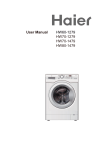
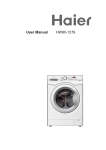

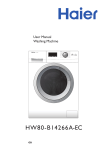
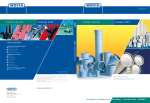
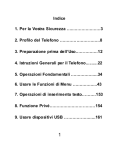
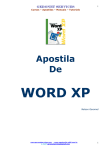

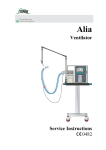
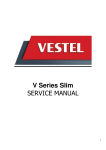
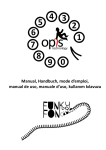
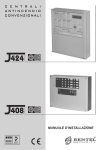
![[ITA] MATRIX Manuale installazione v1-0 lo](http://vs1.manualzilla.com/store/data/006147102_1-fa7918564fa6c545bcfb385c99312d88-150x150.png)

